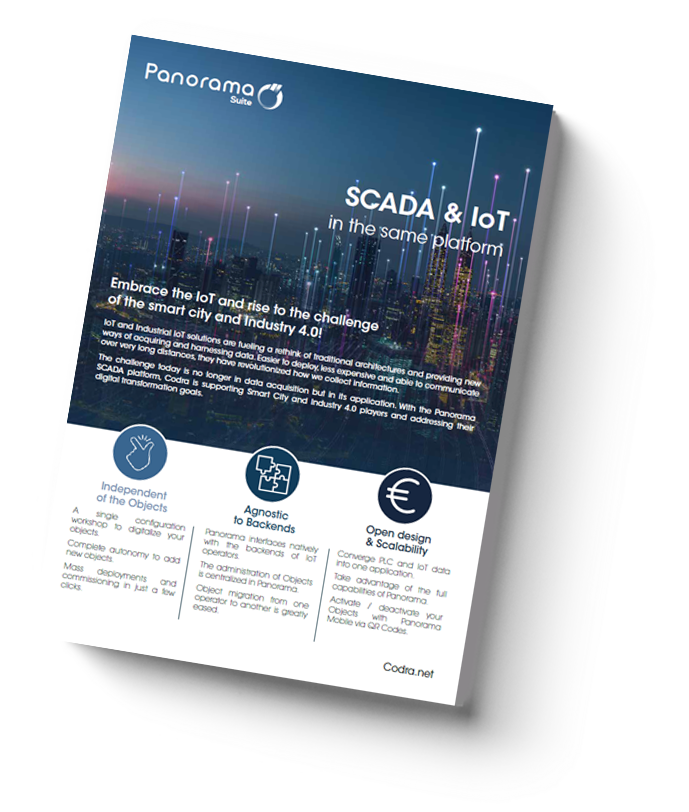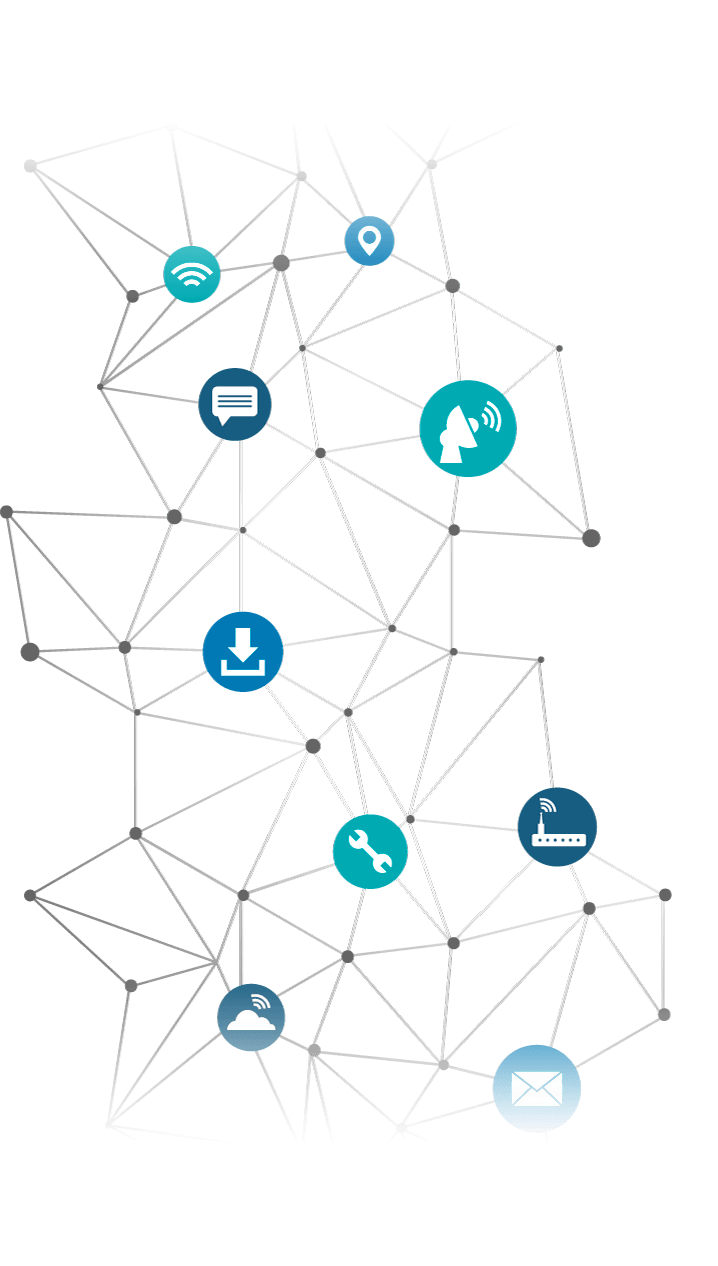At the heart of the OT/IT convergence with Panorama
SCADA solutions devoted to automation (this is OT: Operational Technology) are nowadays proven and often of high quality. In parallel, there are many vertical platforms originating from the world of IT (Information Technology) reserved for hyper-specialized IoT uses (parking, leakage, meters, health, etc.). Few of them, however, natively support the convergence of both worlds. Codra has been a forerunner in this area, offering OT/IT convergence at the heart of its Panorama SCADA application. Critically designed as a secure environment, interoperable with third party applications and offering comprehensive functional coverage, the Panorama platform is the ideal backbone for your technical information system.
Where connectivity is key to the success of your IoT projects
IoT features have been built into our SCADA system at different levels. Firstly, through integration of the client & server MQTT protocol (MQTT broker), and then with the integration of connectors to the cloud or private back offices of operators (SIGFOX and LoRaWAN). We are also researching the integration over the longer term of other technologies based on the same ideas, such as 5G.
At the device level, the Panorama platform supports intelligent device management (commisioning / decommisioning) as well as the processing and fine analysis of stored data. In this way, the data can be connected, correlated and cross-referenced with real-time data from PLCs. This makes it possible, for instance, to generate control loops in a highly cost-efffective way.
From Internet of Things to “servicialization” of assets
OT/IT convergence, achieved through the interoperability of platforms and connected devices, is allowing companies to develop new services as of today. These innovations pave the way for increased competitiveness and why not new market insights and opportunities. In manufacturing, it is becoming more and more common to rent the use of machines or assets instead of buying them. The hyper connectivity of the hardware assets allows their manufacturers and suppliers to ensure availability rates (and therefore monthly invoicing levels). The benefits of predictive maintenance are there to be leveraged too! This economic paradigm shift is already standard practice in the aero engines sector of the global aerospace industry. Eventually, this IT “servicialization” is likely to be extended to many sectors of the economy, from cars and airplanes to medical equipment and healthcare.









